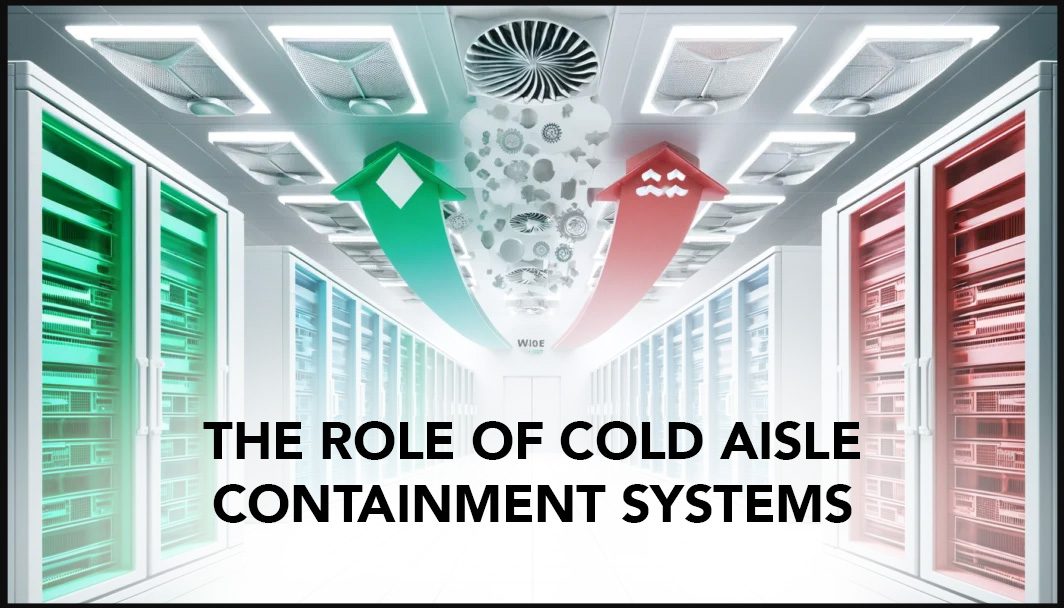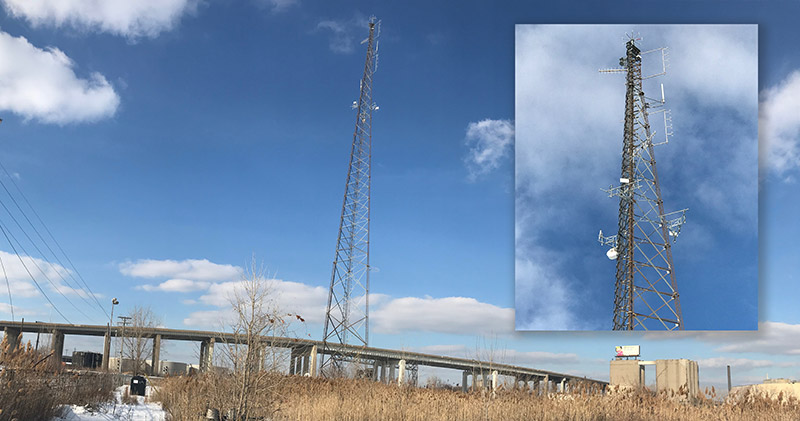
In the quest for enhanced energy efficiency and operational effectiveness in data centers, cold aisle containment systems have emerged as a pivotal innovation. These systems, integral to modern data center cooling strategies, offer a targeted approach to temperature control. They are ensuring the optimal performance of critical IT equipment. By meticulously separating cold supply air from the hot air exhausted by server racks, cold aisle containment enhances cooling efficiency, reduces energy consumption, and significantly lowers operational costs.
Understanding Cold Aisle Containment
The essence of cold aisle containment lies in a remarkably straightforward yet brilliant strategy: encapsulating the cold aisle within a data center to channel cool air directly to where it’s most crucial—server intakes. This approach significantly diverges from traditional cooling methods. It tends to distribute air less selectively across the data center environment, often leading to inefficiencies and wasted energy.
Operational Mechanics
Cold aisle containment systems distinguish themselves by effectively segregating the cold aisle. It is ensuring it remains isolated from the data center’s broader environment. This isolation is accomplished using doors, roofs, and partitions. Which encase the cold aisle, thereby averting the intermingling of disparate air temperatures. The result of this isolation is a marked increase in cooling system efficiency. Cool air remains densely concentrated around the server intakes, which necessitates less energy for cooling. While the expulsion of warmer air away from sensitive equipment mitigates the risk of overheating.
Integral Components
A typical cold aisle containment setup comprises several key components, which together create an effective barrier against thermal mixing. Doors positioned at the aisle ends, transparent roof panels above the aisles, and containment curtains or panels that delineate the cold aisles from their hot counterparts are standard. These components collectively ensure that cool air is retained within the cold aisles, directly impacting the cooling system’s performance positively.
This methodological approach to data center cooling not only optimizes energy use, leading to cost savings. Also contributes to the longevity and reliability of the critical infrastructure housed within these facilities. By maintaining a consistent and controlled temperature, data centers can achieve greater operational efficiency and reduce the environmental impact associated with excessive energy consumption. Cold aisle containment, therefore, represents a pivotal advancement in the pursuit of sustainable and efficient data center operation. It is aligning with broader objectives of energy conservation and environmental stewardship.
Benefits of Cold Aisle Containment
The strategic implementation of cold aisle containment systems marks a significant step forward in enhancing energy efficiency within data centers. By meticulously managing airflow and diminishing the reliance on extensive cooling mechanisms, these systems offer a dual advantage: they drastically reduce energy expenditure while simultaneously delivering considerable cost benefits. This optimization of energy not only directly impacts the financial health of operations by reducing overhead costs but also plays a crucial role in supporting wider objectives related to sustainability and environmental stewardship.
Augmented Performance of Cooling Systems
At the core of cold aisle containment’s value proposition is its ability to refine the efficacy of existing cooling frameworks. By concentrating on a targeted cooling approach, these systems ensure that the available cooling capacity is utilized to its maximum potential. This method significantly bolsters the performance of the cooling infrastructure, facilitating a more controlled and consistent data center environment. As a result, operational conditions such as temperature and humidity are maintained within ideal thresholds. This is ensuring the longevity and reliability of sensitive computing hardware.
Contributions to Environmental Sustainability
The implications of adopting cold aisle containment extend beyond operational efficiency and financial savings. One of the most compelling outcomes is the reduction in energy consumption. In which directly translates to a decrease in carbon footprint associated with data center activities. In this manner, cold aisle containment systems are not just a tool for cost reduction but also a critical component in the pursuit of sustainable computing practices. By elevating efficiency, these systems lessen the environmental burden of digital infrastructure operations. It is contributing significantly to the reduction of greenhouse gas emissions. This alignment with green computing principles underscores the role of cold aisle containment in fostering environmentally responsible data center management.
In essence, the adoption of cold aisle containment strategies represents a multifaceted approach to improving data center operations. Through the lens of energy efficiency, cost savings, and environmental responsibility, cold aisle containment emerges as a pivotal innovation. It not only propels data centers towards operational excellence and financial optimization but also positions them as proactive participants in the global effort to mitigate environmental impact.

Implementation of Cold Aisle Containment Systems
The meticulous planning and design phase is foundational to the successful deployment of cold aisle containment systems within data centers. This initial stage demands an in-depth analysis of the data center’s unique architectural and operational characteristics. It is focusing on the layout, cooling demands, and the specific configuration of aisles and rack arrangements. Evaluating these parameters is essential for creating a containment solution tailored to enhance cooling efficiency and accommodate the existing infrastructure seamlessly.
Strategic Installation for Minimal Disruption
The installation process of cold aisle containment systems is crafting to align with the distinct needs of each data center. It is ensuring that the integration of new components like containment doors, roof panels, and aisle end doors is executing with precision. A key goal during this phase is to minimize the impact on daily operations,. It is enabling a smooth transition to the new system without significant downtime or disruption. This careful approach to installation underscores the importance of adaptability and operational continuity in the enhancement of data center environments.
Harmonizing with Existing Cooling Mechanisms
A critical aspect of implementing cold aisle containment is the seamless integration with the data center’s existing HVAC systems. Optimizing the performance of the containment system often requires fine-tuning of airflow patterns and cooling setpoints to adapt to the newly established thermal barriers. This harmonization process is vital for ensuring that the cold aisle containment works in concert with existing cooling infrastructure. It is maximizing energy efficiency and bolstering the overall effectiveness of the data center’s temperature control measures.
By addressing these key areas—planning and design, careful installation, and integration with existing systems—data centers can achieve a significant enhancement in their operational efficiency. Cold aisle containment not only elevates the performance of cooling systems but also contributes to a more sustainable and cost-effective operation. It is reflecting a strategic investment in the future of data center management. Through these thoughtful considerations, organizations can ensure that their data centers are well-positioned to meet the demands of modern computing while adhering to best practices in energy efficiency and environmental stewardship.
Challenges and Solutions
The deployment of cold aisle containment systems, while beneficial, is not without its hurdles. Common challenges include navigating the constraints posed by pre-existing infrastructure. As well as achieving optimal airflow within the intricate layouts of contemporary data centers. These obstacles necessitate a bespoke strategy that respects the individual nuances and operational specifics of each facility. Tailoring solutions to address these unique conditions is essential for the successful integration of cold aisle containment. It is ensuring that the system delivers on its promise of enhanced efficiency and performance.
To surmount these challenges and harness the full potential of cold aisle containment, a multifaceted approach is required. Key interventions may include retrofitting existing cooling mechanisms to align with the new containment architecture, fine-tuning airflow management to prevent hot and cold air mixing. It is also making considered modifications to the data center’s physical arrangement. Such strategic measures are crucial for creating an environment where cold aisle containment can thrive. Thereby maximizing the operational efficiency of the data center.
By engaging in thorough planning and meticulous implementation, it’s possible to navigate the complexities associated with integrating cold aisle containment into diverse data center ecosystems. These efforts pave the way for not just overcoming immediate challenges but also setting the stage for long-term operational success. Enhanced cooling efficiency, reduced energy consumption, and improved environmental performance are within reach. It is demonstrating the tangible benefits of adapting and innovating in response to the unique demands of data center management.
FAQs
- What is the difference between cold aisle and hot aisle containment? A: While both strategies aim to improve cooling efficiency, cold aisle containment focuses on enclosing the cold aisle to direct cool air to server intakes, whereas hot aisle containment encloses the hot aisle to isolate exhaust air.
- How does cold aisle containment affect data center temperature? A: It stabilizes temperature across the data center by ensuring that cool air is delivered more efficiently to server intakes and preventing the mixing of hot and cold air streams.
- Can cold aisle containment be retrofitted in existing data centers? A: Yes, cold aisle containment can be retrofitted in most existing data centers. The process involves evaluating the current cooling infrastructure and making necessary adjustments to accommodate the containment system.
By embracing cold aisle containment, data centers can significantly enhance their cooling efficiency, leading to reduced energy costs, improved equipment performance, and a smaller environmental footprint. This strategic approach to temperature control represents a key step forward in the ongoing evolution of data center design and operation.




